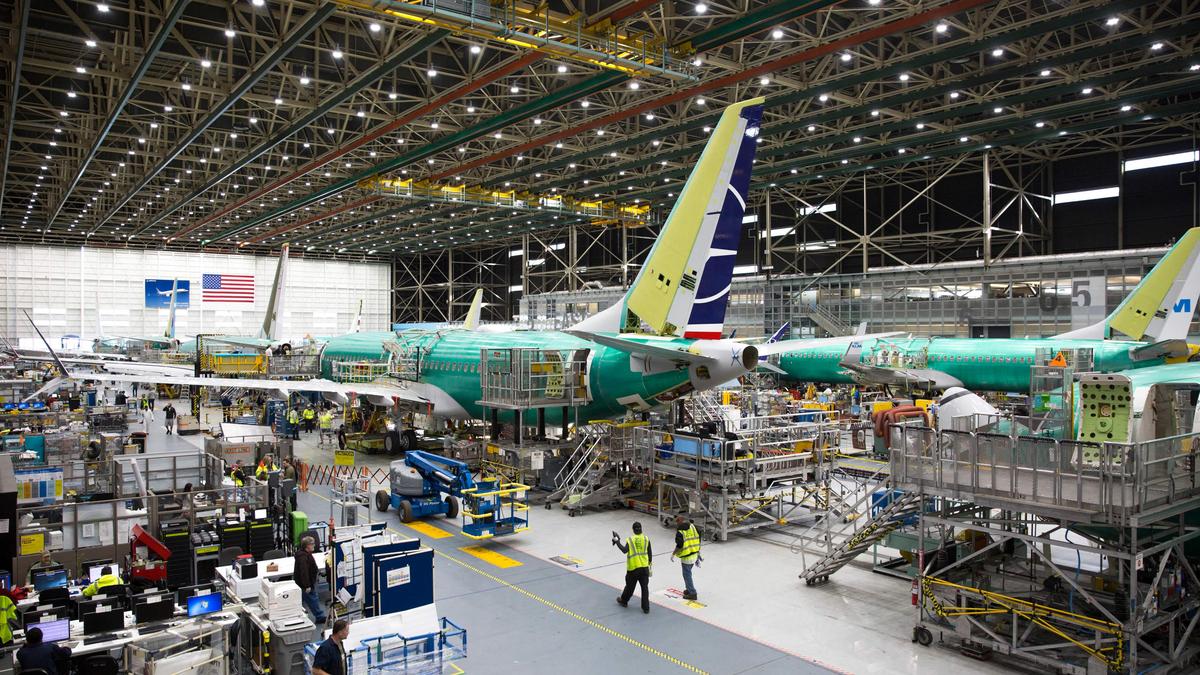
On Boeing 737’s ‘defective’ rudder system | Explained
The Hindu
NTSB investigates Boeing 737 rudder control issue, affecting airlines worldwide, with Collins Aerospace actuator malfunction.
The story so far: Certain variants of the Boeing 737 (fitted with a ‘rollout guidance actuator’) are under the scanner over an issue that concerns the potential for the occurrence of a jammed or restricted rudder control system. The United States National Transportation Safety Board (NTSB) has put out safety alerts to the manufacturer, Boeing, and the Federal Aviation Administration (FAA). Flowing from this, India’s Directorate General of Civil Aviation has issued directives to Boeing 737 operators in India. The issue has arisen after an NTSB investigation into an incident on February 6, 2024, involving a United Airlines Boeing 737-8 MAX flight, UA 1539, from Nassau in the Bahamas to Newark, U.S. In 2019, two similar events had occurred with foreign airlines.
During the landing rollout phase of flight 1539, the rudder pedals were found to be “stuck” in the neutral position. Despite the use of pedal force of about 42 pounds by the crew there was no movement which resulted in the captain having had to use the nosewheel steering tiller to control the aircraft’s direction. The crew then found the copilot to be experiencing the same problem.
The crew applied more pedal force (flight data recorded it to be about 59 pounds) which resolved the issue. The problem was reported to the airline’s maintenance department. There was no damage to the aircraft which was removed from service for checks.
Examination of the Flight Data Recorder (FDR) data aligned with the pilot’s statements of a malfunction. The data also showed increasing force inputs to the rudder pedals ‘even as the rudder surface position remained near its neutral position’. But with significant pedal force by the crew for the second time after landing, the rudder pedals and rudder began to function normally.
On February 9, 2024, United Airlines did a test flight with the incident aircraft wherein there was a recurrence of the malfunction. After landing, the NTSB was notified. An investigation began which included United, the FAA, Boeing and Collins Aerospace, the manufacturer of the rudder component in question, called the rollout guidance actuator. A preliminary report which detailed the circumstances of the event was published on March 12.
The FDR data were analysed at the NTSB laboratory in Washington DC. In addition, there was an inspection of the rudder control system but no obvious malfunctions were detected. But still, certain parts of the rudder system components were removed for detailed inspections. After this, United conducted a second test flight where the rudder control system operated normally.
As a part of the aircraft tail, the rudder plays a crucial role in aircraft control around the yaw axis (one of the axis of aircraft motion) and is vital in coordinated turning, ground directional control, crosswind landings and even in the event of engine failure.

U.S. President Donald Trump threatens 200% tariff on wine, champagne from France, other EU countries
Trump threatens 200% tariffs on European alcohol in response to EU levies, sparking trade tensions and market uncertainty.












